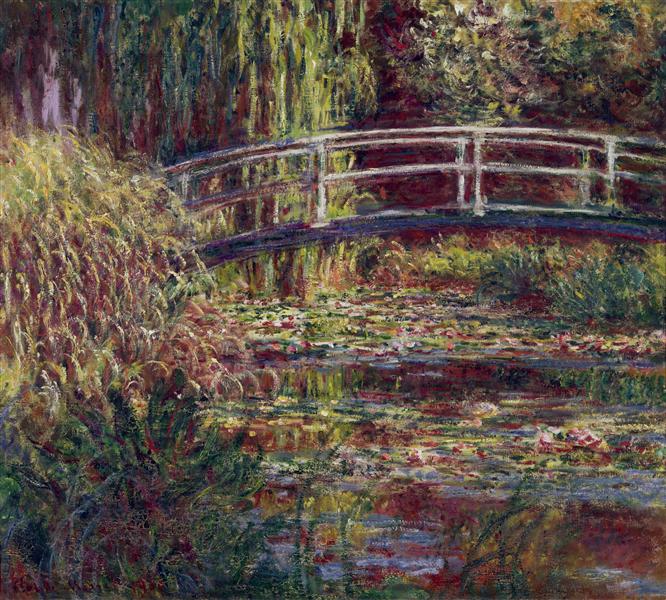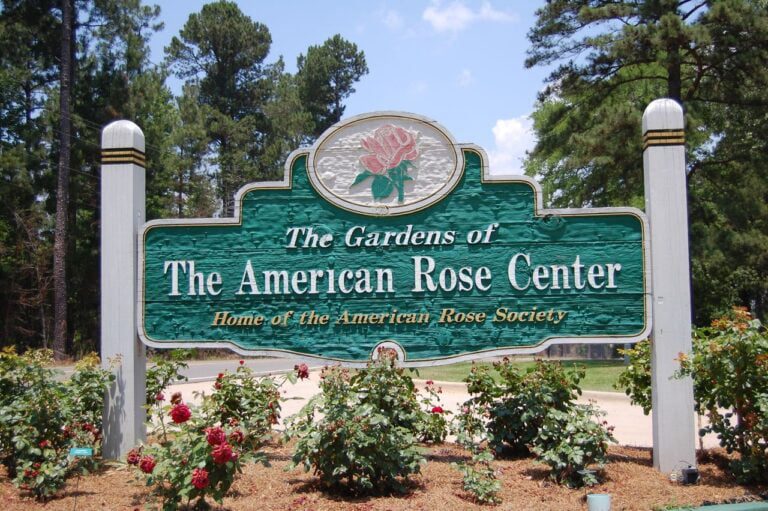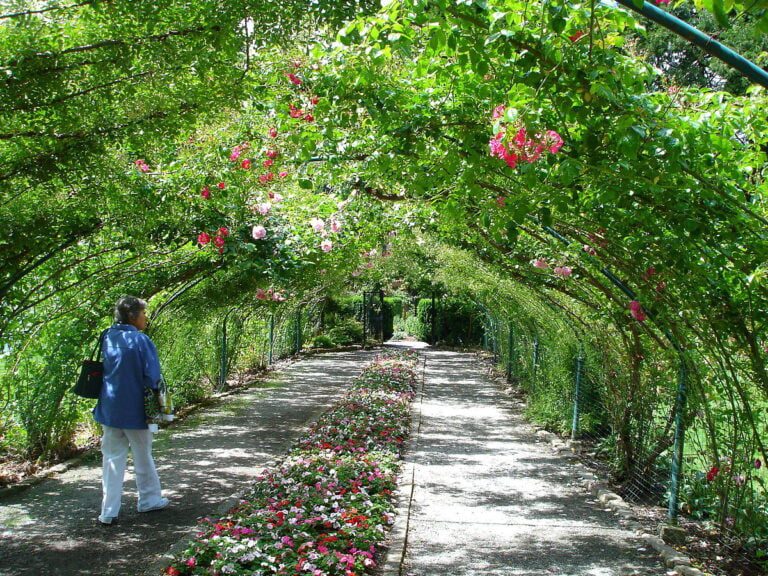Monet’s Fabulous Gardens at Giverny
Monet’s Fabulous Gardens at Giverny
This is required travel if you garden
Claude Monet was, in almost every sense, the founder of French Impressionist painting. In fact, the term itself comes from one of his early paintings, “Impression, Sunrise“, seen below.

Monet rented a cider farmhouse and 2 acres of orchards in Giverny in 1883 from a local landowner that eventually became his estate. The house was close enough to the local schools for his children to attend, and the surrounding landscape offered many suitable motifs for his work.
Their home was situated near the main road near Giverny and had a barn that doubled as a painting studio, fruit orchards, and a small kitchen garden. After fitting the house to his family’s needs – painting its walls in hues of blue and yellow – he quickly set up a studio, and hung it with his collection of Japanese prints.
After 7 years of benefiting from well-received artwork, Monet was prosperous enough to buy the house, outbuildings, and land in 1890. Then, during through the 1890s, Monet built a greenhouse and a spacious second studio, well lit with several skylights. He then turned to the gardens.
To start, he used seven gardeners at once
As a painter of controlled nature, Monet’s garden was one of his biggest sources of inspiration. As a competent gardener, he now threw himself into the design and expansion of his new gardens, writing precise weekly instructions for his 7 gardeners. He created specific designs and color layouts, and amassed a large collection of botanical books that allowed him to talk to his gardeners using their own glossary.
He cleared the land of trees, tilled the soil, and enlisted his expert gardeners to help him make the most of the Normandy landscape, while introducing plants from as far away as Japan.
He initially adopted the French gardening tastes of his day, though drawing from his artistic instincts, he would eventually develop a style all his own, carefully plotting out a geometric patchwork of flowerbeds, installing arches that would be enveloped in flora.

He focused on engineering moments of light and color that would occur throughout by designing the locations of the flowers according to their colors: those of light colors, such as yellow or white, are placed in the most shaded areas of the garden. Then the darkest flowers are placed in juxtaposition with the light ones. It came out in the paintings . . .
Another of Monet’s tasks was to create a certain density of vegetation around the central path of the garden to achieve moments in which the visitor is surrounded by plants, such that the sky is nearly invisible.

He painted about 80 pictures of the Clos Normand garden alone.
A great start to see this effect is the walk through Clos Normand—the main garden beside Monet’s former home, which occupies nearly a hectare of land. It is stunning, with the central path lined with nasturtiums and fragrant roses. In early summer that becomes a blooming carpet of a thousand flowers : daffodils, tulips, narcissus, iris, oriental poppies, peonies – and looks like his paintings.
Across the road is the famous Japanese Garden pond based on Monet’s Japanese prints, and those equally famous lily pads. On first blush, the blooming plants with small spots of color are rather mundane, but as you look closely into the water’s reflections mixed with overhead sunlight, it’s easier to see why he was so transfixed on the pond as an elegant subject for his work.
His majestic panels representing this garden can be seen as a complete exhibit at the Mussee D’Orangerie near the Louvre in Paris. It’s worth a trip to Paris just for that if you’re a traveling gardener.
They are as long as a residential reflecting pond with thousands of minute brushstrokes. And as seen from the below historical picture of the artist, these panels were considered by him as one enormous subject.

This studio (above) is now the gift shop of the Foundation Claude Monet.
Atelier de Monet
In his original workshop, reproductions of Monet’s works create the atmosphere of Monet’s time. The painter liked to keep a record of each step of his career. Many of the originals that were kept in this room are now to be seen at Musée Marmottan-Monet in Paris.
Like everywhere in the house, the furniture and the objects are still exactly the same, which gives a great authenticity to Monet’s home.
A bust of the artist by Paul Paulin reminds visitors to the house that the leader of impressionism became famous during his lifetime, although he had to wait until he was fifty before he was eventually recognized as a master.

His garden: both inspiration and finished work
More than just inspiration and open-air studio behind world famous paintings, Claude Monet’s gardens in Giverny have long been recognized as a work of art in their own right.

As early as 1907, writer Marcel Proust described the gardens at Giverny as the “transposition of art” because the gardens had become art in themselves.
As of 2017, the French government announced that the site is a candidate for a UNESCO World Heritage Site designation. No small achievement, that – and it is due in large part to its head gardener during the long 40 year restoration.
Gilbert Vahé, the Giverny former head gardener for over 40 years, was a slight and bespectacled student of the gardens. He often wore a simple straw hat, polo shirt, and leather shoes while he worked, while his fingernails, encrusted with earth, were the only clue that gave away his formidable expertise.
Vahé lived next door, where he kept his own garden in retirement, is a sight in itself – often stopping tourists in their tracks on their way to the Monet home.

His duties at Giverny began with the restoration of the gardens in 1977. Michel Monet, the artist’s son, had left the property to Paris’s Académie des Beaux-Arts upon his death in 1966, with a view for it to become a museum. But it went untouched for a decade, then an initiative to revive the garden eventually materialized thanks to the French philanthropist and curator Gérald Van der Kemp, who stayed on to help the restoration begin in 1977.
Vahé recalled to a journalist once in 1976, that Monet’s gardens were largely unknown in France, save for intellectual circles; even in the nearest town of Vernon, just six kilometers away, shopkeepers were unaware that the famous artist had lived there.
After his 40+ years, they do now . . .

The famous Japanese bridge from his paintings as it is today
None of the plants from Monet’s time had survived, and the land was overgrown with grass and weeds. Van der Kemp had to take cues from the artist’s letters, oral accounts from relatives, photographs, and of course, paintings, to recreate the legendary garden that Monet had brought to life.
The process of revitalizing the existing gardens was slow, spanning a long four years. Vahé, seen middle below, worked alongside a team of fellow gardeners, including one who had worked alongside Monet himself, while Van der Kemp conducted finished research that would determine what should be planted and where during the following decades.

He worked with a team of 10 full-time gardeners, as well as volunteers, from worldly horticulturists to teenage French apprentices. While his gardeners typically worked from 7 to 4:30 p.m., with a long lunch in between, his own days often begin before then and last until 8 p.m. He stayed on until a suitable replacement was found in late 2018.
No day is typical in a garden this size; the head gardener’s hours might be filled with watering plants, ordering bulbs, finishing paperwork in the office across the road, visiting a supplier, tending to plant production in greenhouses, or even guiding film crews through the gardens.
This lucky man got to spend his working life surrounded by one of the world’s most beautiful, bountiful gardens, and was blessed with the talent to care for them the way they needed.
Gardening the light
The plants we see today are not exactly the ones that Monet painted a century ago, and they’re not all placed where they were when the artist lived, but Vahé believed that’s not what’s important. Instead, he worked to maintain the original aesthetic—a certain profile of color and light—that corresponded to Monet’s vision.

After his death from lung cancer in 1926, his only surviving child, Michel, became heir to the Monet family property, which has since seen a long restoration since 1977 and has been open to the public, including its stunning gardens.
In 2020, the Impressionist master’s home and gardens—where he lived and worked for most of the second half of his life—are still a site of pilgrimage for art lovers, gardeners, and Francophiles alike.
After working with his gardeners, Monet started to paint his gardens for the full second half of his life until 1926. Many of these images are the foundation of the study of Impressionism. Water lilies, roses, arched plantings, sandy walkways – they’re still there. We’re lucky to still be able to visit them as they imagined by a master like Monet.
Sources: Giverny.org, Musée Marmottan-Monet, Viking Cruise Lines, WikiArt, Wikipedia,







